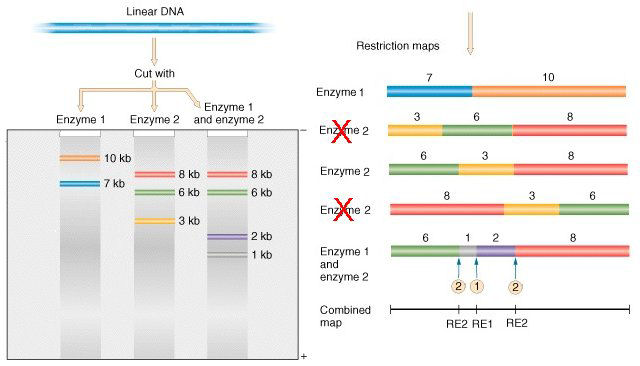
Logic of double-digest
restriction
mapping

Logic of double-digest
restriction
mapping
Enzyme 1 cuts
a linear DNA
molecule into two fragments, implying a single cut site; Enzyme 2
produces three fragments, implying two cut sites. We start by
arbitrarily placing
the
Enz1 cut site cloer to left end of the DNA
(top
map). Comparison of the Enz2 single- and 1x2 double-digest
patterns
shows
that the two larger fragments are conserved, so Enz1
must cut the smallest (3Kb) Enz2
fragment. The smallest
fragment
cannot be at the left end (2nd map), because
Enz1 would cut the DNA beyond
it. Similarly, the largest (8Kb) fragment
produced
by Enz2 cannot be at the left end of the map,
since
then the Enz1 cut site would fall within that fragment
(4th
map). Only if the middle-sized
fragment (6Kb) were on the left, followed by the 3Kb fragment,
would Enz1 cut
the 3Kb into the observed 1 and 2Kb fragments (3rd & 5th maps). The
combined map shows the positions of the three RE sites.
[HOMEWORK: Using the same logic, drawn a map starting with the assumption that the Enz1 cut site is closer to the right end of map].